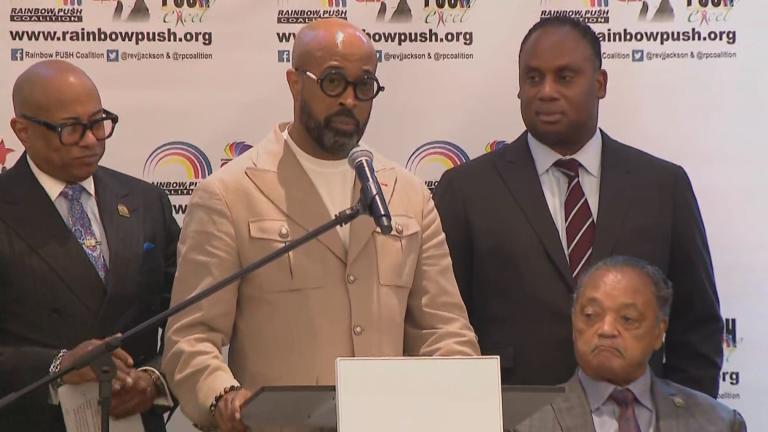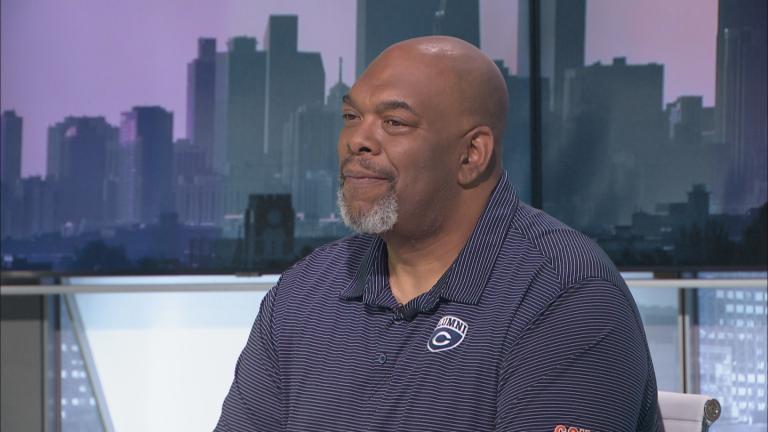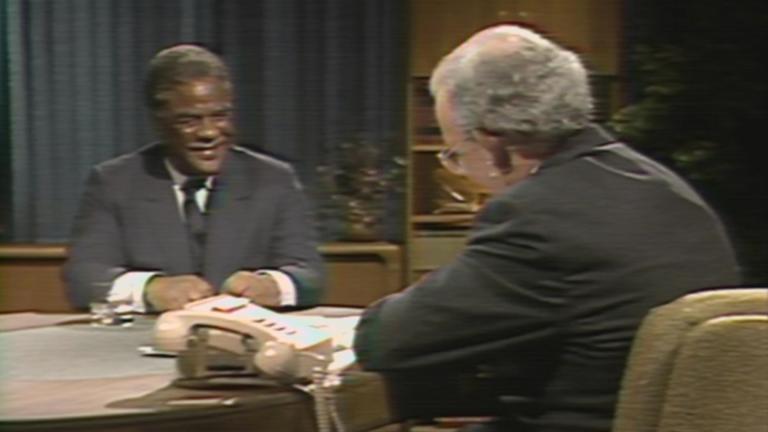This week’s record-breaking temperatures were a reminder that even a city known for its punishing winters can still be blisteringly hot — and even deadly, as we saw during the heat wave of 1995 that killed more than 700 Chicagoans. Since then, the city has increased its efforts to keep people cool in dangerous heat.
Now, Chicago is one of 18 cities participating in the Heat Watch 2023 program with the National Oceanic and Atmospheric Administration, in which community volunteers collect temperature and humidity data to analyze for underlying reasons and potential mitigation efforts.
In his capacity as team lead for the nonprofit Elevate, the Rev. Booker Vance is helping perform the data collection for the study.
“We were part of a collaborative effort between many organizations where we did surveys in communities taking temperatures in the morning, afternoon and evening and then putting the data together,” Vance said. “That’s one of the pieces that is very important is the data-driven kind of analysis that helps us plan appropriately into the future.”
People for Community Recovery executive director Cheryl Johnson said extreme heat is one piece of a broader collection of environmental factors that affect community health.
“It’s part of our mission to make people aware that the correlations between poor air quality and heat, in particular with cardiovascular diseases and respiratory diseases,” Johnson said. “My mom (environmental justice activist Hazel Johnson) was able to connect pollution and public-health related issues associated with urban environments, particularly around industrial pollution.”
Lonette Sims’ organization, People’s Response Network, formed during the COVID-19 pandemic to push for an improved Department of Public Health. She said PRN wants to see a more robust community effort to protect residents — especially older adults — from the effects of extreme heat.
“In the 1995 heat wave, Eric Klinenberg’s book highlighted isolation as one of the key social factors. But in my opinion, it’s worse today than it was in 1995,” Sims said. “We have a smaller Black population than we did in 1995. We have less block clubs, less community connections than we did even back then. And also, the ongoing COVID-19 pandemic has really increased isolation. … There are not as many people around and available to help others, to check on each other.”
Vance said during the heat study, his organization has been offering advice and information to people he encounters for surviving the heat.
“We advise folk to shelter safely,” Vance said. “… We’ve been distributing water. We make sure folk have adequate water, but also cooling centers have been very important and making sure people know where to go, and making sure that information is always available, and the city has really stepped up. What’s done has been great, but it’s not adequate and sufficient for the challenges that we’re facing.”
That kind of community outreach is integral to successfully keeping people safe, Johnson said. But she believes not enough outreach is done, and the impacts of heat can be wide-ranging on already vulnerable populations.
“When you think about heat and the heat-wave pattern that we have here, we need emergency preparedness and response strategies,” Johnson said. “The government people, they work together, they’re collaborative, but they leave the community out of it. … The collaboration needs to be inclusive of the residents because …you have people who, who are diabetic and if there’s an electrical outlet, their health is jeopardized, their food is jeopardized, … an impact on their quality of life.”
Johnson said that while designated cooling centers get a lot of attention when heat rises, there are other public options that people should hear more about.
“When the media talked about cooling places the other day, they only list so many, maybe about six or seven cooling places within the city of Chicago,” Johnson said. “But there are other cooling places. You’ve got libraries, you’ve got the park district. But if you’re not conveying that information to the general public, the community don’t even know that those really exist.”
Ultimately, Sims said, because extreme heat is a public health issue, it falls to public health officials to let people know why they should be concerned and informed.
“I don’t think Chicagoans are really aware about the dangers of heat — heat exhaustion, heat stroke,” Sims said. “And we’re going to have to do a mass public health education around that if we want to save lives.”








